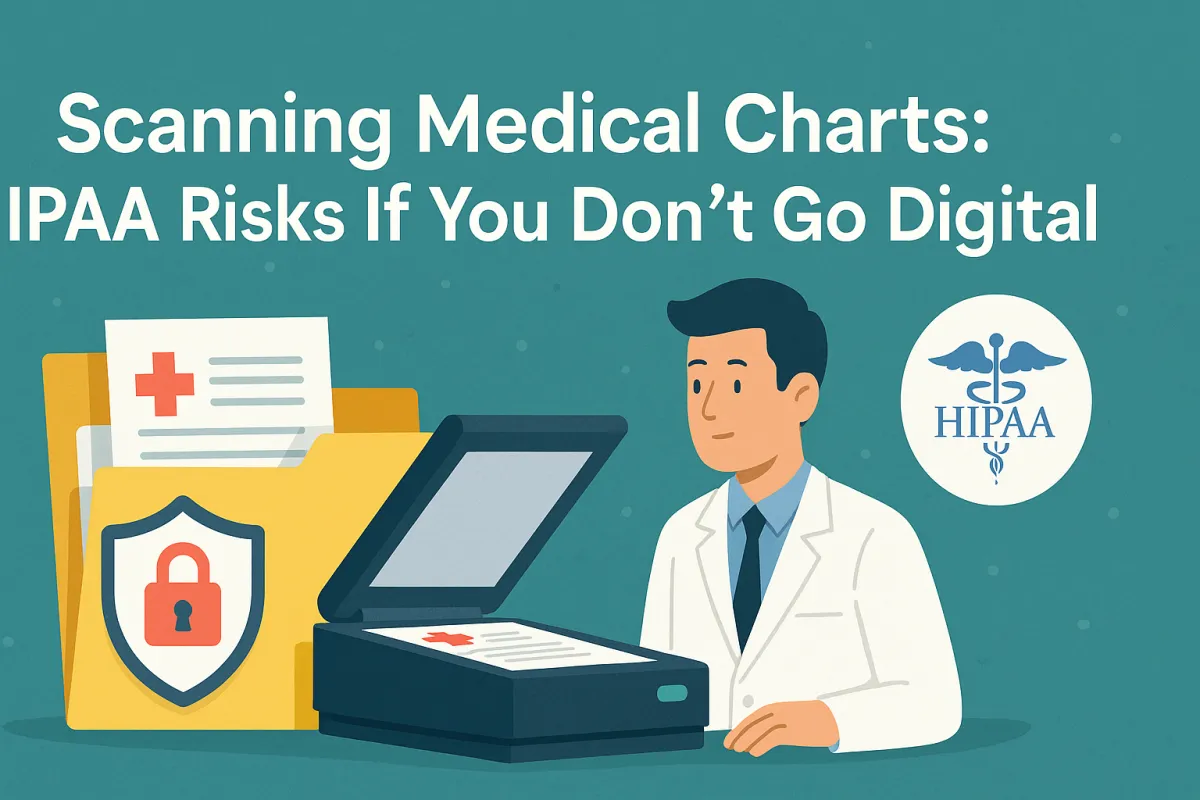
Scanning Medical Charts: HIPAA Risks If You Don’t Go Digital
By: USA IMAGING, Inc.
Still storing patient records in paper charts? You could be putting your practice at serious risk—not just from lost or damaged files, but from HIPAA violations, audit failures, and workflow delays.
Whether you're a private clinic, hospital, or multi-specialty group, digitizing your medical records is no longer optional—it's essential.
In this post, we’ll explain the biggest risks of sticking with paper, how scanning mitigates them, and what a compliant, efficient digital conversion process looks like.
🔐 Risk #1: HIPAA Violations from Improper Access or Storage
Paper charts are difficult to control:
They can be left on desks or in unlocked cabinets
Files can be misfiled, misplaced, or stolen
Access logs are hard to enforce
HIPAA requires that PHI (Protected Health Information) be secured, with strict access controls and audit trails.
Digitizing your charts allows:
Password-protected access
Role-based user permissions
Audit logs for every view or edit
Encrypted backups
📦 Risk #2: Failure to Meet Retention & Destruction Requirements
Medical records must be retained for 7–10 years in most states (and longer for minors or specialized care). But paper storage systems often:
Lack clear destruction policies
Can’t track retention timelines
Cost thousands in long-term storage fees
Digital records make it easy to:
Set retention schedules
Automate file deletion when legally allowed
Eliminate offsite storage and shredding fees
🧑⚕️ Risk #3: Delayed Care and Poor Workflow
Searching through file cabinets slows everything down:
Long wait times for patient files
Misfiled charts waste staff time
New staff can't quickly locate what they need
Digital files are searchable by:
Patient name or ID
Visit date
Provider or department
Keyword within the notes (when OCR is used)
Workflow speeds up and your team spends less time digging, more time caring.
✅ What to Scan: A HIPAA-Compliant Approach
We help providers digitize:
Paper charts and patient folders
Intake forms, waivers, and consent forms
Lab results and diagnostic images
Physician notes and care plans
Archived microfilm or EMR printouts
Sensitive documents like behavioral health records or HIV-related data are flagged and indexed securely in accordance with 42 CFR and HIPAA guidelines.
🧾 USA Imaging’s Medical Chart Scanning Services
We provide:
On-site or off-site chart scanning
HIPAA-trained technicians
Detailed chain of custody documentation
OCR text recognition for fast search
Secure file delivery via encrypted drive or SFTP
Optional file naming, indexing, and folder structuring
📞 Protect Your Practice. Digitize Your Charts.
Don’t risk HIPAA penalties, audit failures, or lost patient files. Let USA Imaging bring your practice into the digital era—safely, securely, and affordably.
Call us at (858) 513-6565
Email: [email protected]
or Request a Quote to get started.
